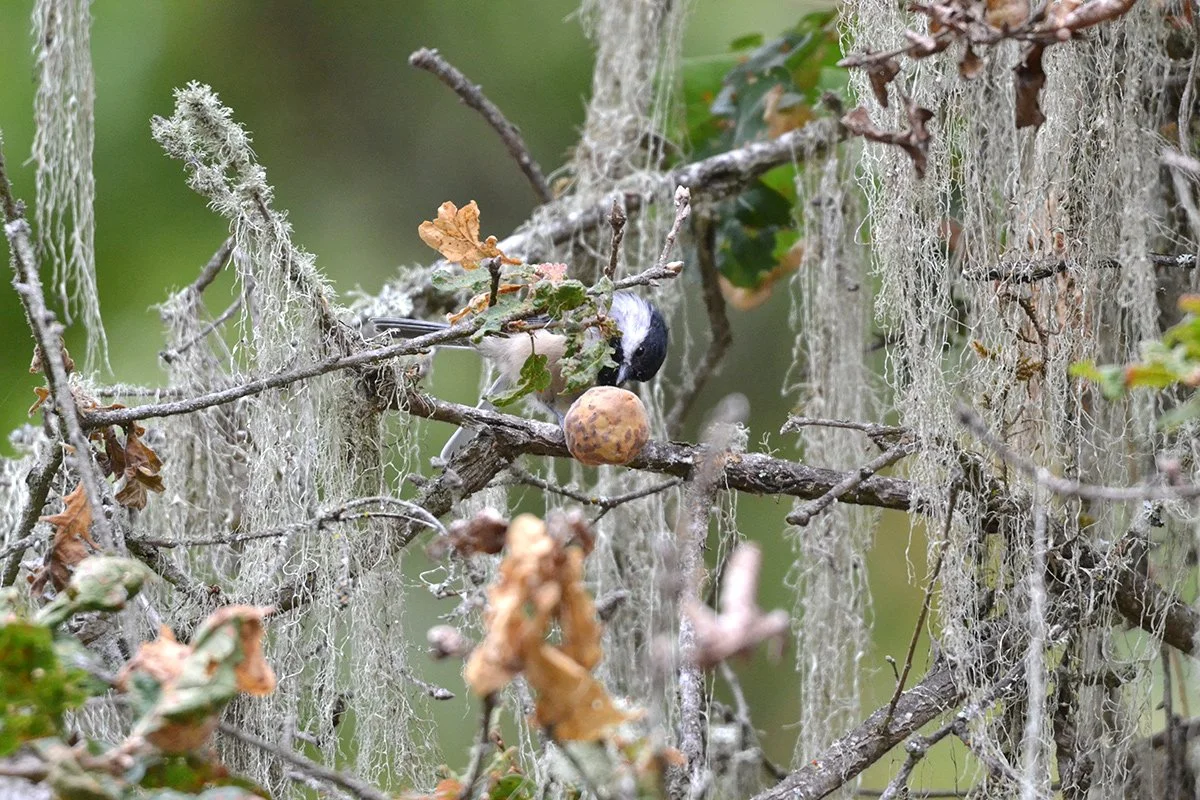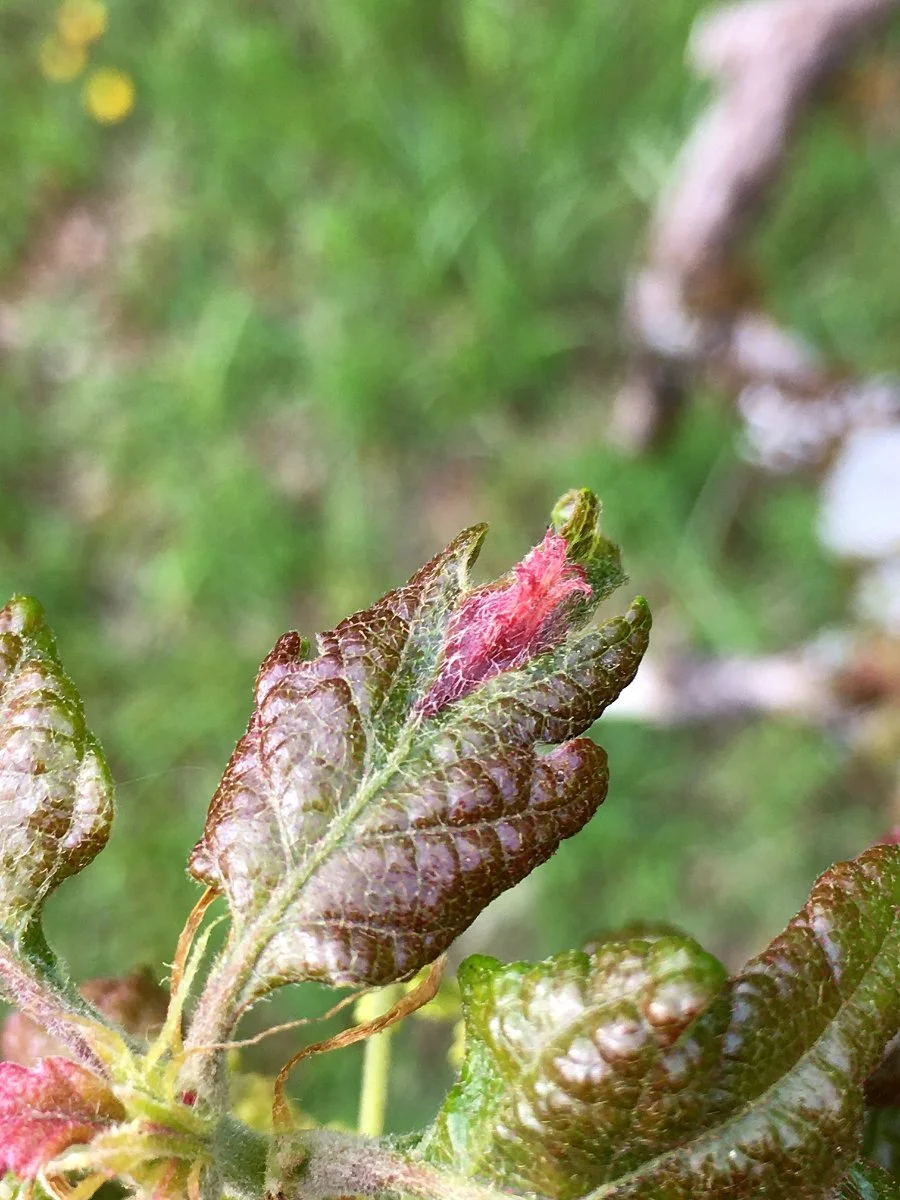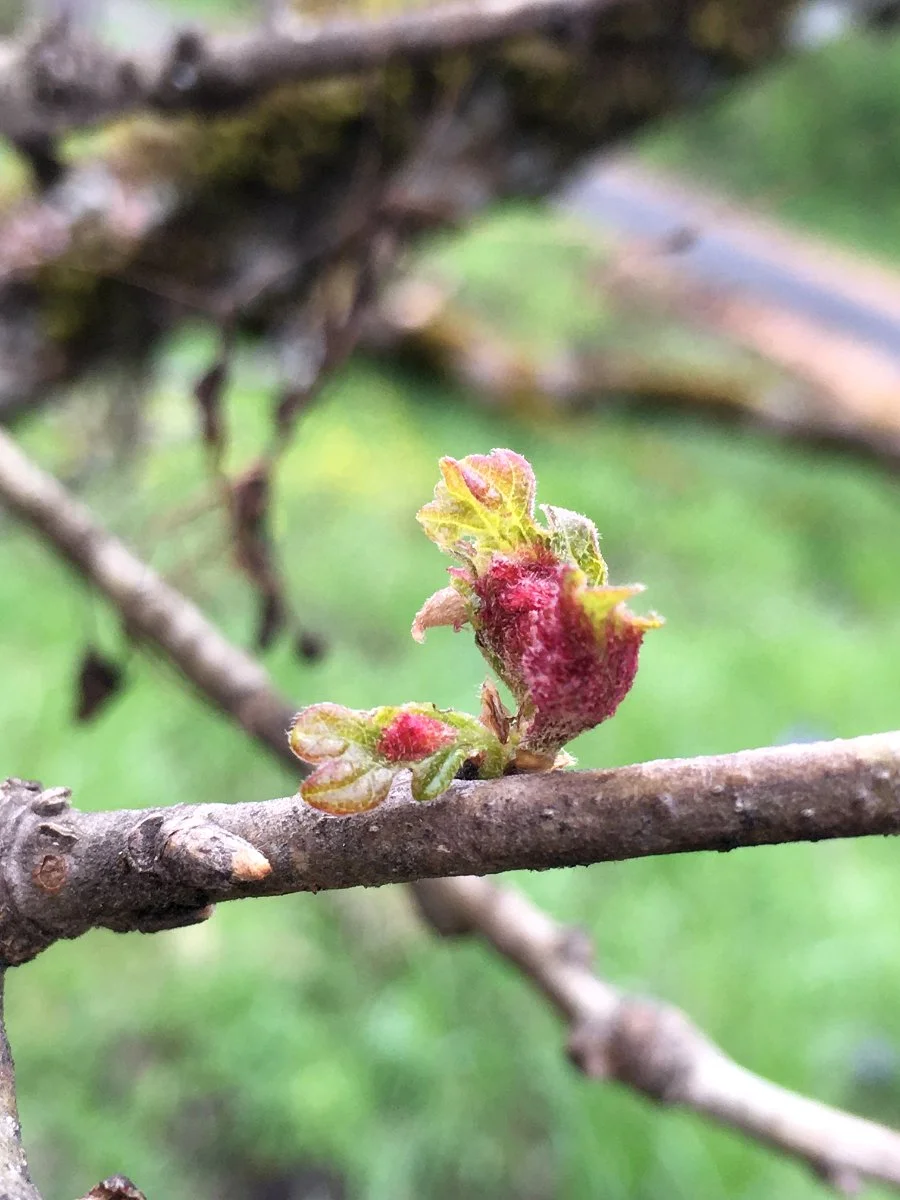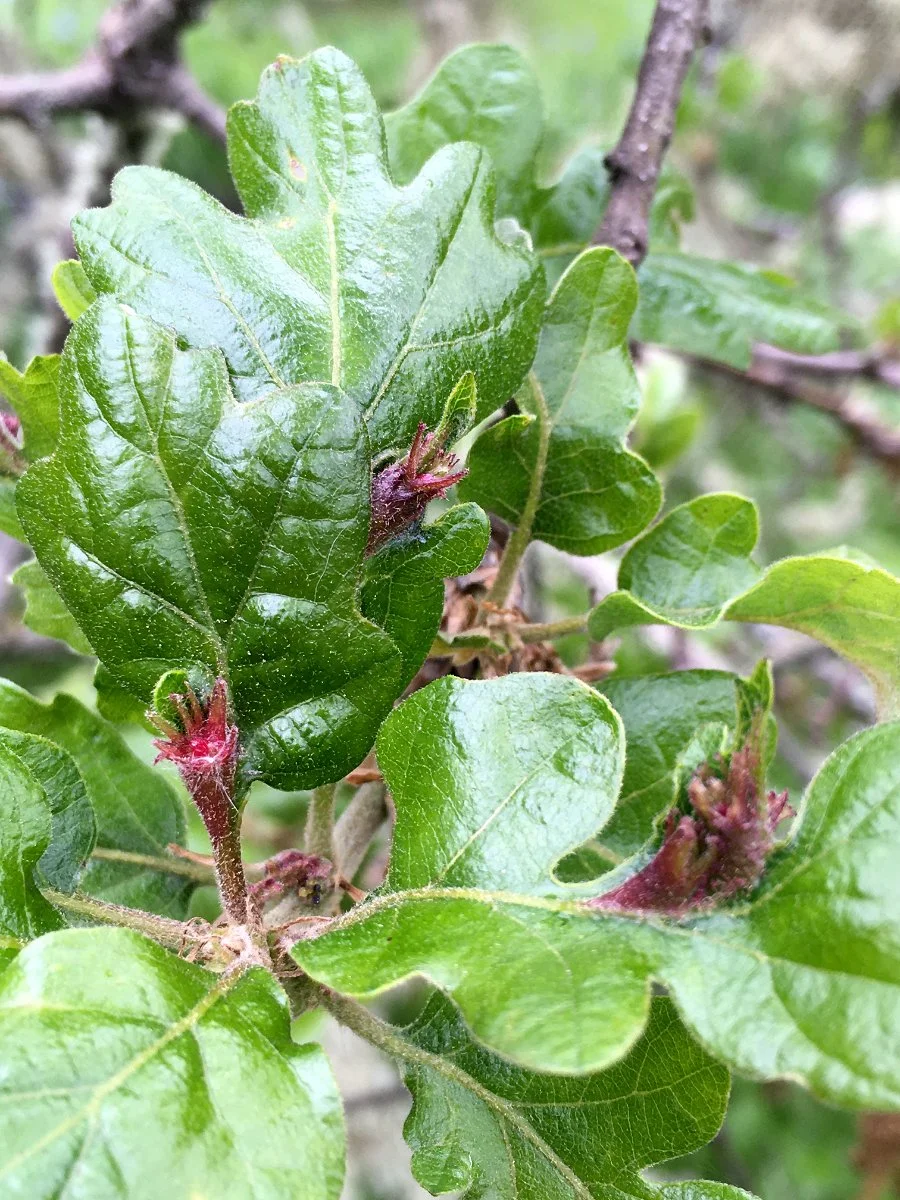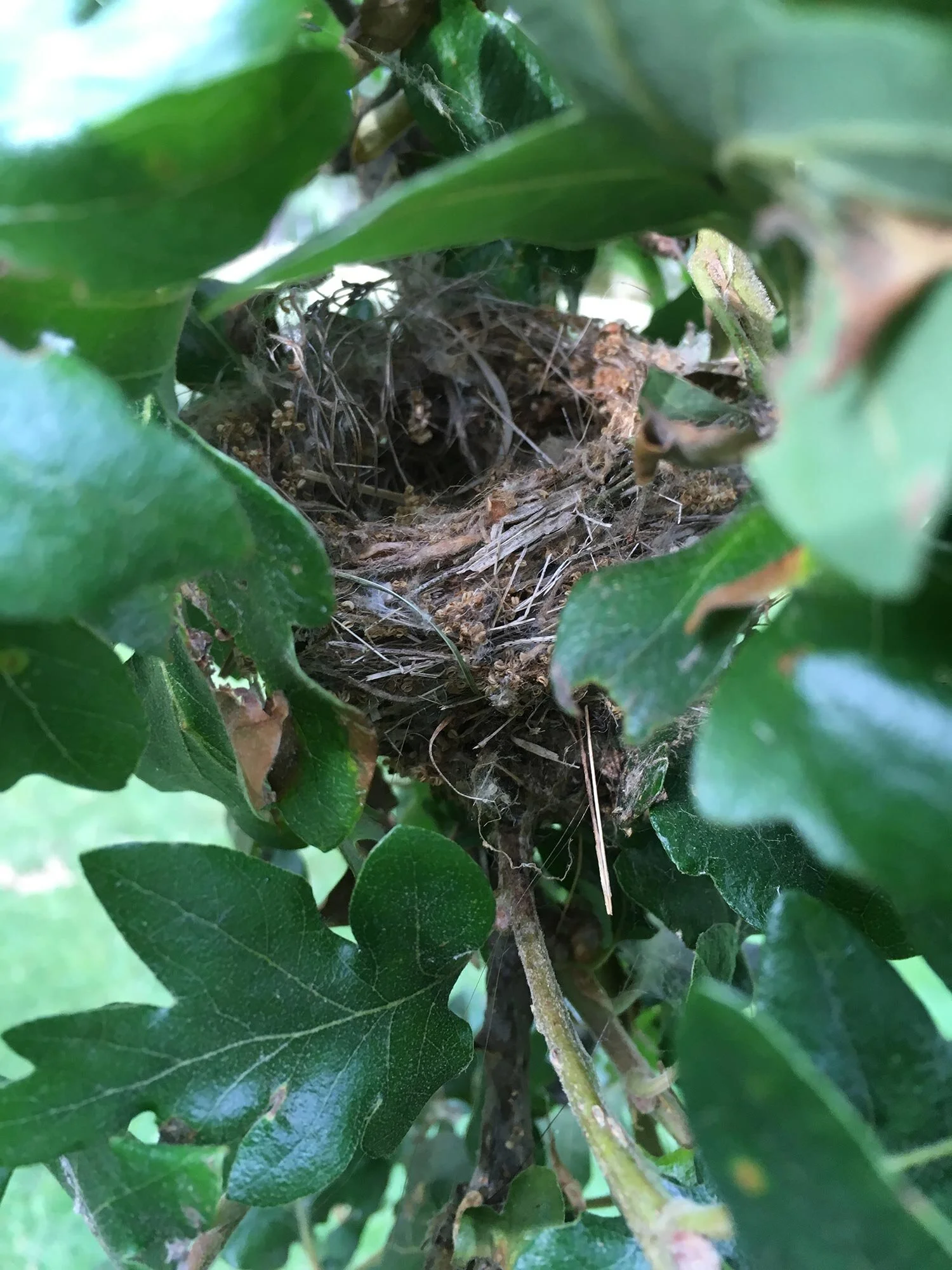Oregon White Oak (Quercus garryana), Beech Family (Fagaceae)
These oaks have a beautiful, majestic shape and invoke a sense of awe in the oak-grass savanna landscape. As you enter the White Oak Pavilion at Mt. Pisgah Arboretum, your memory is immediately imprinted by this tree - truly the icon of the arboretum.
Tree General Description
They love the open, grassland habitat of the valleys and mountain slopes. They are found in SW British Columbia south to central California in the coast ranges and in the Sierra Nevada. They are suited to weather the dry, sunny summers.
Given the space, they grow huge spreading limbs that creates a broad, impressive crown. Over this summer, it seems like every oak tree I walk past at the arboretum has at least a bird or squirrel in it - a truly nurturing tree.
Leaves
When the leaves first emerge they have a reddish tinge. As the new leaves form they are light green and supple. As the leaves mature, they become fairly tough and leathery. At this point they are shiny dark green above, light green and slightly hairy beneath. The lobes are rounded and go halfway or more to the midvein. They are 3-6” (7.5-15 cm) long and 2-4” (5-10 cm) wide.
Flowers
The male and female flowers are on separate inflorescences on the same tree. Oak trees are wind-pollinated.
Female
We all know acorns, and I will often hear children refer to oak trees as acorn trees. That said, I imagine that most people are not as familiar with the female flower that gives rise to this nutritious nut. I am here to introduce you to this tiny flower that can easily be overlooked. They grow from the axils (where the leaf stalk meets the stem) of the new leaves. The Washington State Native Plant Society describes the flowers as: “The pistillate flowers grow singly or clustered. Each pistillate flower is surrounded by a scaly, cup-like involucre, contains an inferior ovary and 3 styles.”
Male
The male flowers aren’t as subtle as the female flowers but they do blend into the spring green that is sprouting throughout the landscape. The male flowers are a yellowish green and hang on a thin catkin. The catkin emerges from the tree fairly compact. As it elongates the clusters of stamens spread out, open to release their pollen, and look wispy and light as they blow in the wind.
Fruit - Acorns
Acorns are smooth, elliptical and 1 - 1.25” (2.5 - 3 cm) long. They are sit in scaly cup that covers about a quarter to a third of the acorn. Many animals, including people, eat this nutritious nut. When these acorns are mature, you can watch jays and squirrels collect them, carry them off and stash them for the winter. They are certainly responsible for helping to disperse and plant this tree.
Bark and Buds
Bark - The bark is light gray and develops into craggy, rough furrows.
Buds - When you touch the buds, they are stiff with a soft, velvety texture.
Oak Galls
The development of galls hasn’t been completely figured out. Galls are created when the wasp lays its egg in the developing plant tissue of the tree which can be on the leaves or branches. The egg interferes with normal plant growth and creates a gall that protects the egg and provides food for the developing larva. Each gall wasp creates a unique structure that is beautiful and interesting to explore.
Speckled Gall Wasp
These galls are found on the underside of the leaves and branches. Gall wasps lay their eggs inside the oak leaves and the tree forms galls that protect the wasp in its larval stage. There are two kinds that I see around the arboretum. There is the speckled oak gall that you see in the first two photos growing on the underside of the leaves. When the light hits them a certain way, they have a beautiful illumination that seems to come from within.
I opened up a couple of the galls that I found on the ground. In the third photo in row 1, you see furry strands radiating from the center where the egg is encased. In the next two photos, you can see the larvae still inside the gall. It is eating the inside and you can see its droppings, called frass, collecting inside the gall. In late summer you can watch chickadees flitting around in an oak tree opening these galls and eating the larvae (See Post September 21, 2021).
Fimbriate Gall Wasp
Oregon White Oaks are a host for many gall wasps. The fimbriate gall wasp forms a fuzzy, red structure that looks like a flower is trying to emerge out of the leaf—it kind of reminds me of a hairy rose hip. A dictionary defines fimbriate as “ Botany, Zoology. having a border of hairs or filiform processes.” I think its name could be more descriptive to include words like flaming, blazing, flaring, crimson, furry, etc. August Jackson put together a guide called Oak Gall Wasps of Mount Pisgah. About fimbriate galls, he writes, “small galls in spring on midrib of leaf bases, producing spines. Starting red then fading to brown.” The guide is available on the arboretum’s website. Find it here.
I like the name Crimson Comet Gall.
Twig Gall Wasp (Disholcaspis mellifica)
Ants and bald-faced hornets are drawn to these twig galls. My guess is that they might secrete a sugary substance that attracks them.
Jumping Gall Wasp (Neuroterus saltatorius)
Plate Gall Wasp
Mistletoe
You can see mistletoe growing throughout the Oregon White Oak trees.
Lichen
It is amazing to see all of the lichen growing in an oak tree. Some of the limbs are completely wrapped with it.
Bird Nests
Many birds use this tree for nesting. This year (2020), I have seen robins, bullock’s orioles, cedar waxwings, western wood-pewees, mourning doves, lesser goldfinches, starlings and black-headed grosbeaks nesting in these oak trees.
It is interesting to see the first Bullock’s Oriole nest is mostly made out of grass or plant fibers and the second one is mostly lichen.
A huge limb was broken off of this oak tree, shown in the last photos. I’m sure when it first happened, it was difficult to see a strong, majestic limb broken off and the remaining part splintered. Then the small, gentle brown creeper builds a nest in it and a whole new way of seeing and thinking about that broken limb opens up.
Life in an Oak Tree
Ants
If you investigate the leaves and branches of an Oregon white oak, chances are pretty good that you are going to end up with some ants crawling on you. They are cruising around all over the tree and if I look closely, they are hanging around with aphids. Ants collect the sugary secretion called honeydew that is expelled from aphids. The ants don’t harm the aphids, they are guarding them. If I poke the leaves or try to come in close for a photograph, the ants will come over and try to run me off.
Ladybugs
I was doing a little sketch today of the acorn and noticed that many of the outer parts of the oak limbs had ladybugs roaming around on them. In the first photo, you see ants collecting honeydew from aphids, and I imagine ladybugs are eating them.
Scars
It is interesting to see where limbs have died (or maybe cut off by the arboretum) and to see how the tree heals the wound.
In the last photo, these scars possibly tell the history of the land before the formation of the arboretum. These lines on this tree look like scars from an old wire fence. I occasionally see parts of an old fence still embedded in a tree out here.
Unsolved Mysteries
The tops of the leaves look like they have been misted with yellow spray paint. I flipped the leaf over and magnified it with my binoculars. There are these tiny, orange round objects on the underside of the leaf that appear to be eggs. As you can see, a ladybug in its larval stage was on the underside of the leaf, probably eating these things. As I checked out other leaves, I found more ladybugs in the larval stage, the pupa stage and the adults.
References
Little, Elbert L. National Audubon Society Field Guide to North American Trees - Western Region, Knopf, 1998.
Jensen, Edward C. and Charles R. Ross. Trees to Know in Oregon, Oregon State University Extension Service, Revised April 2005.
Oregon State University - Oregon Wood Innovation Center - Oregon White Oak (website).
Quick Reference:
Height: 30 - 70’
Leaves: Alternate, Rounded lobes
Fruit: Acorns
Habitat: Valleys or Mountain slopes
Photo Location:
Mt. Pisgah Arboretum
Mt. Pisgah Arboretum Plant List
Eugene, OR
Started page - Summer 2020
































